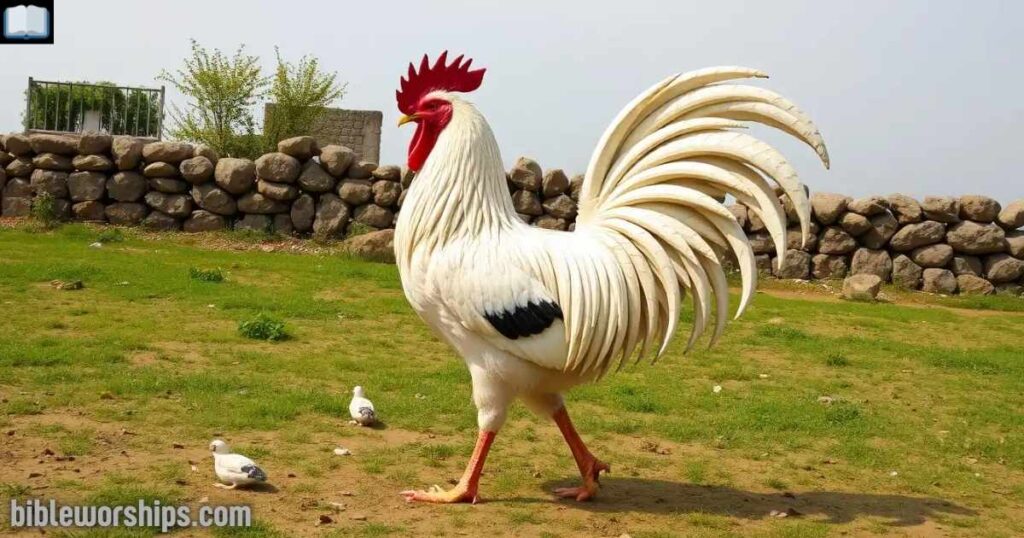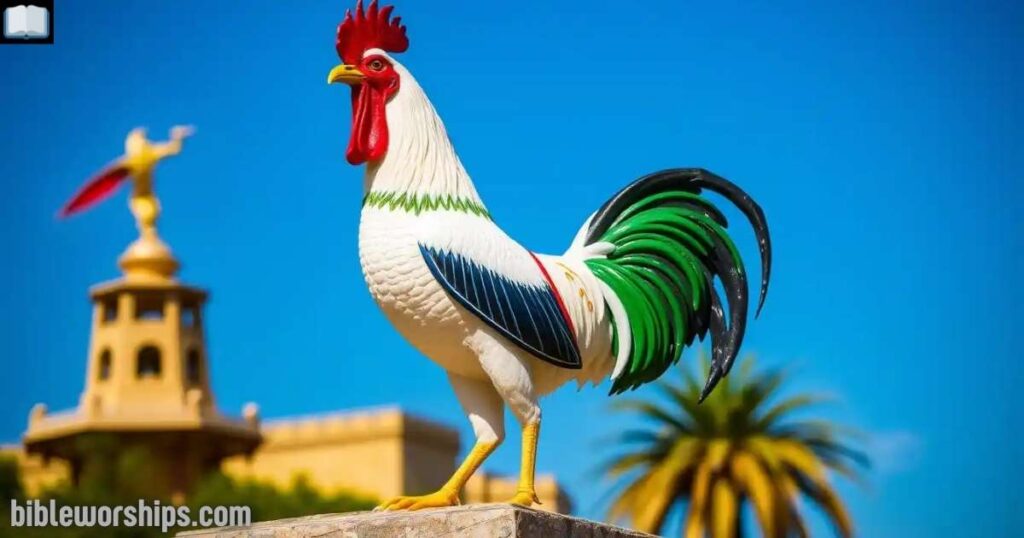The rooster, or El Gallo in Spanish, has long held a profound place in various cultures, symbolizing many different ideas, from strength and bravery to renewal and hope. In 2025, as we reflect on its ongoing significance, the rooster’s role as a cultural icon has become increasingly complex, embodying rich meanings that span beyond mere tradition.
The symbol of El Gallo reaches across art, literature, religion, and even pop culture, resonating deeply with people of all backgrounds. This article explores the multifaceted significance of El Gallo in 2025, examining its symbolism, its historical context, and its presence in modern society.
The Origin of El Gallo and Its Symbolism

The rooster has symbolized various traits throughout history, deeply rooted in ancient cultures. The most prominent qualities associated with El Gallo include:
- Strength and Courage: Roosters are known for their boldness, crowing at dawn with an unwavering sense of purpose. In many cultures, they represent the idea of fighting spirit and resilience in the face of adversity.
- Renewal and Resurrection: In Christian iconography, the rooster is a symbol of resurrection, often linked to the biblical story of Peter’s denial of Christ and the subsequent crowing of the rooster, signifying the return of faith.
- Guardianship and Protection: In some parts of the world, roosters are considered protectors. Their loud crowing is said to ward off evil spirits or signify the start of a new day, bringing hope and protection to the community.
- Fertility and Prosperity: In many agricultural societies, roosters are connected to fertility and prosperity. Their presence is seen as a sign of abundance, symbolizing the success of crops and livestock.
In 2025, El Gallo continues to stand as a symbol of many of these enduring qualities, transcending its role in folklore to play an important part in the contemporary world.
El Gallo in Latin American Culture: A Deeply Rooted Tradition
In Latin America, the rooster is more than just a common barnyard animal—it is deeply entwined with the region’s cultural identity. Its image is featured in countless works of art, festivals, and even everyday life. Here are a few ways in which El Gallo continues to have significance:
1. Traditional Festivals and Celebrations
Many Latin American cultures celebrate El Gallo in local festivals, such as those in Mexico, Puerto Rico, and Colombia, where the rooster is revered for its vibrant energy and bold personality. For instance, during festivals like Fiestas de San Juan or the Festival del Gallo in some regions, people come together to celebrate their heritage, with dances, songs, and rooster-themed displays.
2. Art and Craftsmanship
The rooster is a popular motif in Mexican folk art, particularly in Talavera pottery and Molina pottery, where it represents not only the aesthetic beauty of Mexican craftsmanship but also the cultural significance of nature and life. El Gallo has been portrayed in colorful, intricate designs that celebrate the vibrancy of the culture.
3. Culinary Importance
In many Latin American dishes, the rooster plays a role beyond symbolism—it’s an essential ingredient in traditional recipes. For instance, in the famous sancocho (a stew) in several countries, rooster is used as the central protein, symbolizing strength and nourishment. This reflects the cultural importance of the rooster, not only as a spiritual and artistic figure but also as a sustainer of life.
El Gallo in Modern Society: A Symbol of Hope, Resilience, and Identity
In today’s world, El Gallo has expanded beyond its traditional significance to reflect modern values of hope and resilience. Its depiction in art, music, and media represents the ability to overcome challenges, rise above difficulties, and inspire strength in uncertain times.
1. Pop Culture and Media
Roosters have made their mark in popular culture through various channels, such as film, music, and advertising. In 2025, El Gallo appears frequently in commercials, especially those tied to themes of determination and empowerment. For example, in advertisements promoting sports events or community initiatives, the rooster’s crowing often symbolizes the start of something new and powerful.
2. The Role of El Gallo in Music
The rooster also plays a significant role in Latin American music, particularly in ranchera and corridos (traditional Mexican ballads). In these genres, the rooster is often used as a metaphor for strength, independence, and defiance against adversity. In contemporary music, artists continue to invoke the image of the rooster as a representation of resilience and the struggle for justice, personal growth, or success.
El Gallo as a Global Icon: Symbolism Beyond Latin America

While El Gallo is undeniably central to Latin American culture, its symbolism has spread globally, particularly through diaspora communities. The rooster has become a global symbol of courage and self-expression, seen in everything from tattoos to merchandise, representing individuals’ desires for empowerment.
1. El Gallo as a Tattoo Design
Around the world, the rooster is a popular tattoo choice, often chosen for its association with courage, strength, and new beginnings. For many, a tattoo of El Gallo serves as a personal symbol of overcoming challenges or embarking on a transformative journey. This modern interpretation of the rooster’s symbolism speaks to its continued relevance in 2025 and beyond.
2. The Rooster in Politics and Activism
In various political movements, the rooster has been adopted as a symbol of resistance and defiance. Particularly in protest art, El Gallo stands as a figure of courage and the unwavering resolve to continue fighting for justice, even in the face of overwhelming odds.
The Future of El Gallo: Its Evolving Significance in 2025 and Beyond
As we move further into 2025, the significance of El Gallo continues to evolve. It has moved beyond its traditional roots to become a truly global symbol. Whether as a guardian of tradition or as a beacon of hope, the rooster’s meaning adapts to the changing values and struggles of modern society.
1. Environmental Symbolism
With increasing global concern over environmental issues, El Gallo may take on a new role as a symbol of sustainability and conservation. Given the rooster’s close ties to agriculture and rural life, it could become an emblem of the fight to preserve biodiversity and protect the environment, inspiring a new generation to act for a better future.
2. Cultural Revival
In a rapidly changing world, there is also a cultural revival of traditional symbols, including El Gallo. As younger generations connect with their cultural roots, they are embracing the rooster as a symbol of pride in their heritage. This resurgence may inspire a renewed interest in folklore, customs, and practices that feature the rooster, particularly through music, art, and food.
Conclusion
In 2025, El Gallo continues to be a potent symbol of strength, resilience, and cultural identity. Its meaning, rich in historical context and evolving with the times, speaks to the human spirit’s unyielding drive to face challenges head-on.
Whether in the heart of Latin America or across the globe, El Gallo remains a powerful icon—one that connects us to our past while inspiring us to create a better future. It serves as a reminder that, like the rooster, we too can rise with courage and face each new day with purpose.
El Gallo’s cultural significance is not static—it is ever-evolving, resonating with people across generations, and adapting to modern-day challenges. As the world changes, El Gallo will remain a symbol of hope, resilience, and strength, always crowing to remind us of the dawn of new possibilities.

My name is Razzaq, and I have been writing about Bible verses and prayers for a long time. My deep understanding of these topics allows me to create high-quality content. The information I provide is always 100% accurate, ensuring that readers receive reliable and valuable insights.
